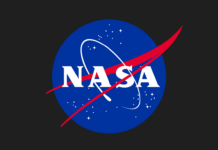Unveiling Uranus: Voyager 2’s Legacy and the Enigma of Its Magnetic Field
In the realm of space exploration, few missions have left as indelible a mark as NASA’s Voyager 2. This daring spacecraft, which embarked on its journey across our solar system in 1977, provided humanity with its only close-up encounter with the enigmatic planet Uranus during a flyby in 1986. While the mission delivered groundbreaking discoveries, it also introduced perplexing mysteries that puzzled scientists for decades. Recently, a re-examination of the data collected during this flyby has shed new light on some of these conundrums, offering explanations rooted in celestial serendipity.
A Historic Encounter with Uranus
Voyager 2’s flyby of Uranus stands as a monumental achievement in space exploration. As the only spacecraft to visit this distant planet, Voyager 2 provided a wealth of information that transformed our understanding of Uranus. The mission unveiled new moons, intricate rings, and a surprising anomaly in the planet’s magnetic field. This anomaly challenged existing theories about how magnetic fields interact with energized particles, earning Uranus a reputation as an outlier in our solar system.
The data collected by Voyager 2 revealed that the planet’s magnetosphere—the region dominated by its magnetic field—was unlike any other encountered in our solar system. The magnetosphere appeared compressed, and the radiation belts surrounding Uranus were unexpectedly intense, second only to Jupiter’s infamous belts. Yet, the source of these energized particles remained a mystery. Scientists were left with puzzling questions: Why was the magnetosphere so compressed, and where were the expected sources of plasma?
The Cosmic Coincidence
Decades later, a team of researchers revisited the Voyager 2 data, seeking answers to these enduring questions. Their findings, published in Nature Astronomy, identified a cosmic coincidence as the key to understanding the unusual phenomena observed during the flyby. In the days leading up to Voyager 2’s encounter with Uranus, the planet experienced an atypical event in space weather—a phenomenon that affects the magnetic fields of planets.
Space weather encompasses various disturbances in space, primarily driven by the solar wind, a continuous stream of charged particles emitted by the Sun. These particles interact with planetary magnetospheres, sometimes causing dramatic changes. In the case of Uranus, the solar wind event compressed its magnetosphere to a rare state, with conditions occurring only about 4% of the time. This compression explained the intensified radiation belts observed by Voyager 2.
Understanding Magnetospheres
To appreciate the significance of this discovery, it’s essential to understand magnetospheres. These are protective bubbles surrounding planets with magnetic cores, shielding them from harmful solar and cosmic radiation. Earth’s magnetosphere, for example, protects us from the solar wind, which can have adverse effects on our planet’s atmosphere and technology.
Magnetospheres are vital for understanding planetary environments and the potential habitability of moons and planets. Studying Uranus’ magnetosphere not only enhances our knowledge of this distant world but also provides insights into similar phenomena occurring in other parts of our solar system and beyond.
Unraveling the Mysteries of Uranus’ Magnetosphere
The peculiarities of Uranus’ magnetosphere have long intrigued scientists. Voyager 2 detected electron radiation belts of unexpected intensity, rivaling even those of Jupiter. However, there appeared to be no source of energized particles to sustain these belts. The rest of Uranus’ magnetosphere seemed devoid of plasma, a puzzling observation given that the planet’s five major moons were expected to contribute water ions to the system.
The recent analysis suggests that the solar wind event not only compressed Uranus’ magnetosphere but also expelled plasma from the region. This expulsion likely created the observed vacuum in the magnetosphere, explaining the apparent absence of plasma. Simultaneously, the solar wind event intensified the magnetosphere’s dynamics, injecting electrons into the radiation belts and accounting for their unexpected strength.
A New Perspective on Uranus’ Moons
This newfound understanding of Uranus’ magnetosphere has implications for the planet’s moons. Initially, scientists concluded that the moons must be geologically inert, given the absence of expected plasma. However, the latest research suggests a different narrative. The temporary lack of plasma could be a result of the solar wind event, rather than an indication of inactive moons.
This revelation opens the door to the possibility that some of Uranus’ moons might be geologically active, potentially spewing ions into the surrounding space. This prospect has reignited interest in exploring the Uranian system, with the National Academies’ 2023 Planetary Science and Astrobiology Decadal Survey prioritizing Uranus as a target for future NASA missions.
Reflecting on Voyager 2’s Legacy
Linda Spilker, a scientist at NASA’s Jet Propulsion Laboratory, was among those who eagerly anticipated the data from Voyager 2’s flyby of Uranus in 1986. The encounter was filled with surprises, fundamentally altering scientists’ perceptions of the Uranian system. Spilker, who has returned to the iconic mission as project scientist, reflects on the significance of the recent findings. “The flyby was packed with surprises, and we were searching for an explanation of its unusual behavior,” she recalls. “This new work explains some of the apparent contradictions, and it will change our view of Uranus once again.”
Voyager 2: A Journey Beyond Our Solar System
Voyager 2, now traveling through interstellar space, continues to be a beacon of human ingenuity and curiosity. At nearly 13 billion miles (21 billion kilometers) from Earth, it remains a testament to our desire to explore the unknown. Its legacy endures through the data it collected, which continues to fuel scientific discoveries and reshape our understanding of the cosmos.
Conclusion
The Voyager 2 flyby of Uranus serves as a reminder of the unpredictable nature of space exploration. While the mission revealed many of the planet’s secrets, it also left scientists with challenges that took decades to unravel. The recent analysis of the data collected during the flyby underscores the importance of revisiting and reinterpreting historical data, as new insights can emerge with advances in technology and scientific understanding.
As we look to the future, the mysteries of Uranus beckon, inviting further exploration and discovery. With upcoming missions and continued research, humanity’s understanding of this distant world and its dynamic magnetosphere will undoubtedly deepen, contributing to our broader knowledge of the universe and our place within it.
For more Information, Refer to this article.

































